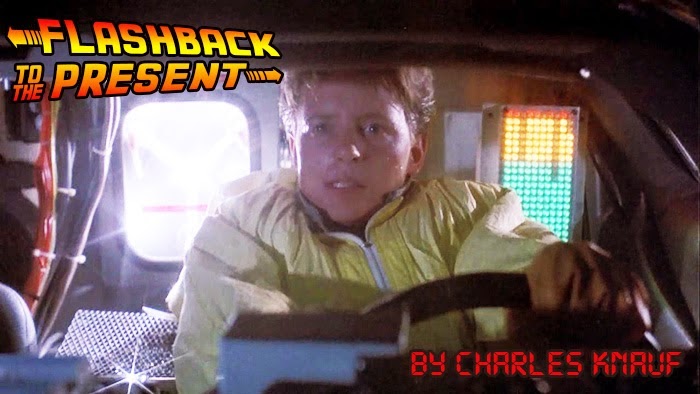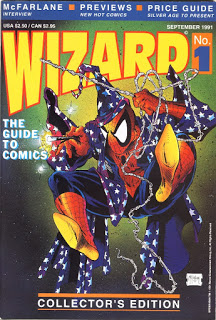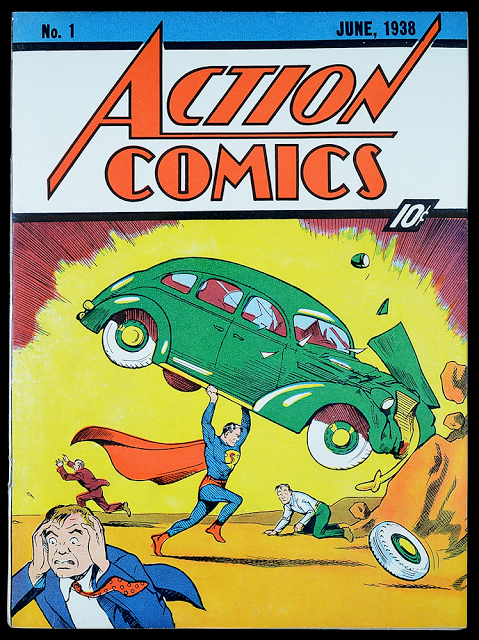I was in a local comic book shop the other day, wandering the aisles, when the end of Roy Batty’s famous speech from Blade Runner (actually, improvised by Rutger Hauer) popped into my head:
I’ve seen things you people wouldn’t believe. Attack ships on fire off the shoulder of Orion. I watched C-beams glitter in the dark near the Tannhäuser Gate. All those moments will be lost in time, like tears… in… rain. Time to die.
There was a time in comics during the 1990s where, if you can believe it, the medium was actually bigger than it is now. I’ve seen comic book writers with agents, artists who were getting paid ridiculous money, and comic books being celebrated as the next big investment.
Sure, there wasn’t as many movies then, and the ones that did pop up weren’t The Avengers or the Dark Knight trilogy, but my god. comics were HUGE.
It seemed everywhere you looked there was a cartoon, action figure, comic book shelf, or poster with Wolverine on it.
Practically anyone in the industry had their own publishing house, new characters were bursting on to the scene on a monthly basis, and the money flowed like water.
Kids all over wanted to be comic book creators and everyone thought they had the next big idea.
So this week, I think my article will be on the Big Comic Book Boom and Comic Book Crash of 1993.
You may ask how comics were such a huge thing at a time with far more limitations at the visibility of an intellectual property. We didn’t have the internet and, as I said before, the huge blockbuster movies weren’t a thing.
In response, I think that this boom and crash can really be attributed to two things: the collector’s market and the distribution system.
In the 1980s, people started making this huge deal out of collector items from yesteryear – baseball cards, magazines, posters, action figures… all the things your parents threw out when you moved away that you simply couldn’t find anymore.
Desirable things in the eyes of those that wanted them yet couldn’t get their hands on the item. This, almost by definition, is a collector’s item. So, like precious metals, these items’ prices were exponentially getting higher.
… and no other item experienced growth quite like the comic book.
When stories of some schlub in Indiana found a near-mint copy of Action Comics #1 in their deceased parent’s attic and sold it for hundreds of thousands of dollars, people all over started scouring everywhere for old books.
And when there were no more old books to find, they started looking for current hard-to-find books.
So, in response, the comic book market answered – more specifically, the publishers and distribution system.
Most items you see on your store shelves have a distributor. These distributors take an item from its source and determines who gets the item and how much of it. I don’t want to get too far into distribution, other than to say comic books have one as well. Before the boom, comic book distributors kept a tight leash on where they placed their stacks of books – they wanted to make sure that the locations in which they would distribute the books had the collateral to back up the amount they would sell.
However, the rising interest in comic books changed all that.
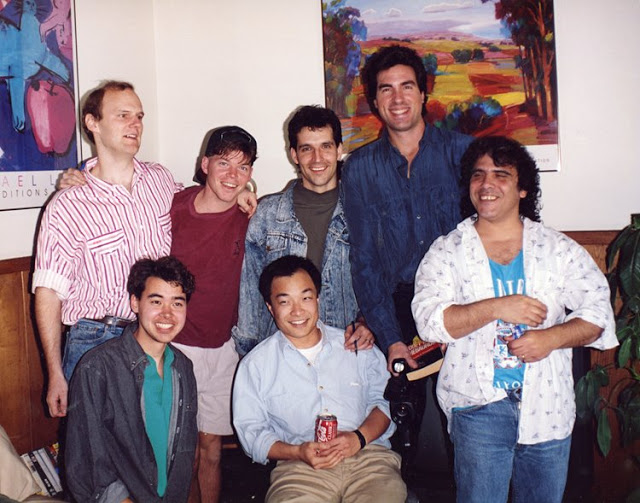 |
| These guys did very well for themselves |
Two distribution companies, Diamond Distribution (which, today, has the monopoly of comic distribution) and Capital City Distribution decided to basically crush all other distributors, like Conan at the beginning of The Barbarian, by lowering their standards to the point in which EVERYONE could be a comic book seller; but, they had to only deal with them.
This plan worked, and expanded the market even further; all of a sudden there were comic shops on every corner and pretty much anyone with a few hundred bucks, a printer and a pulse could be a “publisher.”
At the time, the collector’s market was making the general public believe that, at any moment, the next “big book” could be worth a ton of money – and the publishers weren’t helping at all. Publishers would cycle issue #1 as often as possible, market “alternative covers” that were one-per box of books (or less), and introduce event-after-event, just to make the guy who read about that schlub in Indiana who bought a Ferrari from his Superman book think he has a chance at getting rich with comics.
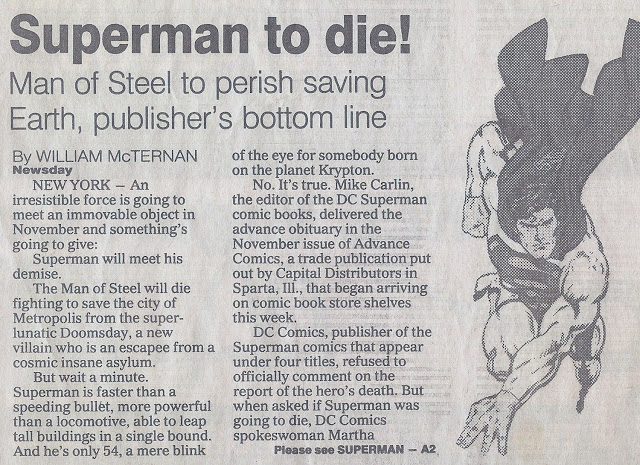 |
| One of the 90’s biggest gimmicks that brought collectors into stores |
Now, back to the distributors.
With Diamond and Capital City taking in MASSIVE orders, the publishers continued to happily oblige and continued to do what I wrote about in the previous paragraph. Numbers continued to grow and comics continued to travel to all corners of the world. It was insane – we were seeing numbers of books sold equal to the amount of books sold during World War II where the troops were being sent free copies, there was no TV and toys were basically a stick with a hunk of chewing gum on it.
All the publishers at the time and the distributors were rolling deep, making it rain, paying astronomical amounts of money for talent and flying directly into the sun.
Then… it happened. One person looked at the emperor during his parade and noticed that, holy crap, they can see his balls.
When people attempted to sell their book to cash in on that huge payday for the chromium variant edition of Switchblade McGurk #1, buyers were like, “Wait, I have a whole boatload of those in the back. What else you got?” The market was so oversaturated with books that it was impossible to make any sort of profit. And in an attempt to further promote their collectibles, trading cards became a focus of comic readers, going so far as to have exclusive stories available only via trading card.
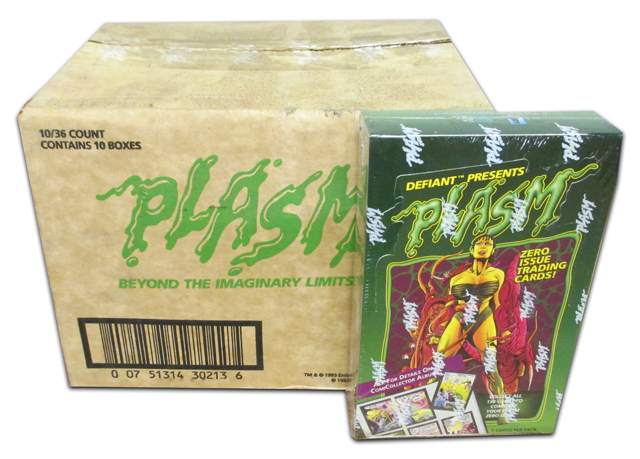 |
| Exhibit A |
Because, and this is the inalienable truth to collecting, the thing I mentioned at the beginning of this essay: the things most desirable are always the things that are hard to get. The reason that schlub in Indiana made so much money for his copy of Action Comics #1 was because no one kept their copy of Action Comics #1. Superman was, is, and always will be one of the most recognizable characters on the face of the planet and no one knew that the book, which was essentially treated like a newspaper at the time, would be worth anything in the future.
And just like that, starting in 1993, the market took a phenomenal nosedive. A massive amount of shops closed their doors, publishers of all kinds went out of business, and those huge piles of “investment” that people kept locked in their hermetically sealed basements were used for kindling.
Rumor and fear quickly gave way to talent and distribution exclusivity. Capital City closed, selling their remaining assets to their competitor, leaving Diamond the only major distributor in the industry. The herd was thinned to a point where a number of people lost jobs, investments, and interest in comic books as a whole.
So that, my friends, was the meteoric rise and catastrophic failure of the comic book boom.
Now if you’ll excuse me, I’ve got to try to hawk this pile of Beanie Babies for gas money.
Until next time…


































































































